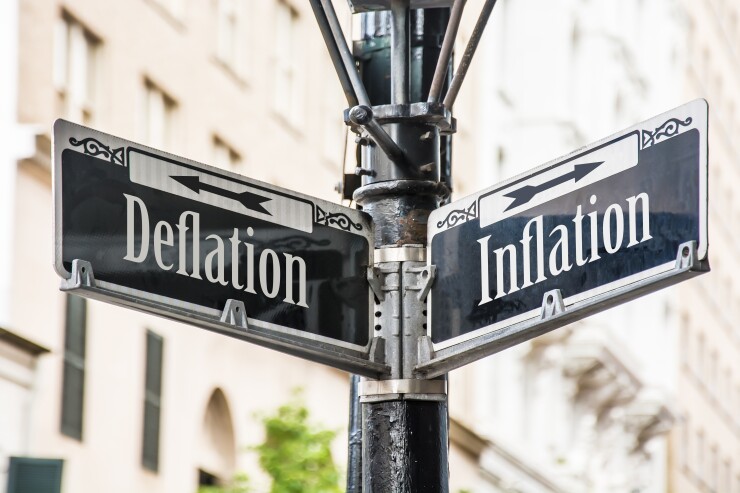The Federal Reserve’s futile efforts to achieve 2% inflation have basically failed for a decade. Then the COVID-19 pandemic hit, with its disinflationary effects, raising questions of how that would impact future inflation.
Projections still suggest it will take time for inflation to rise to 2%. The Fed in its latest Summary of Economic Projections released this week, sees it taking until 2023 for inflation to hit 2%, important because under its revised policy framework, the Fed wants a 2% average for inflation, meaning it will need to exceed 2% for some time to make up for past misses.
And on Friday, the underlying inflation gauge rose 0.1 percentage point and is estimated at 1.4% in November, according to the Federal Reserve Bank of New York. Still tame.

In a recent report, Scott Wren, senior global market strategist at Wells Fargo Investment Institute, wrote that the firm doesn’t see runaway inflation ahead.
“Some pundits have been looking for a meaningful rise in inflation and higher interest rates with the result being headwinds for the stock market over the coming year,” he wrote. “We disagree. While we do expect only modest rises in interest rates and inflation, we do not look for these factors to negatively affect the stock market.”
After a recession, as the unemployed return to work and the economy gets going again, inflation generally rises with the growth in demand, since people have money to spend again.
The 10-year Treasury, Wren predicts, will end next year “only modestly higher than current levels” as the Fed’s purchases of securities and global demand will keep long rates in check.
Separately, the Leading Economic Index rose 0.6% in November after growing 0.8% in October, The Conference Board reported Friday.
The Coincident Index gained 0.2% after a 0.6% rise a month earlier, while the Lagging Index fell 0.4% in November after a 0.3% climb a month before.
Despite the gain in the headline index, “its pace of improvement has been decelerating in recent months, suggesting a significant moderation in growth as the U.S. economy heads into 2021,” according to Ataman Ozyildirim, senior director of economic research at The Conference Board. “Initial claims for unemployment insurance, new orders for manufacturing, residential construction permits, and stock prices made the largest positive contributions to the LEI. However, falling average working hours in manufacturing and consumers’ worsening outlook underscore the downside risks to growth from a second wave of COVID-19 and high unemployment.”
The U.S. current account deficit widened to $178.5 billion in the third quarter from the $161.4 billion shortage a quarter earlier and a $121.6 billion gap in the third quarter last year, the Commerce Department reported Friday. Economists polled by IFR Markets expected a larger $188.9 billion deficit. The deficit grew to 3.4% of current dollar gross domestic product from 3.3% the previous quarter, Commerce said. The increase in the gap resulted largely to a bigger deficit on goods. The deficit shows the difference of balances on trade in goods and services and income flows between U.S. residents and those of other nations.





